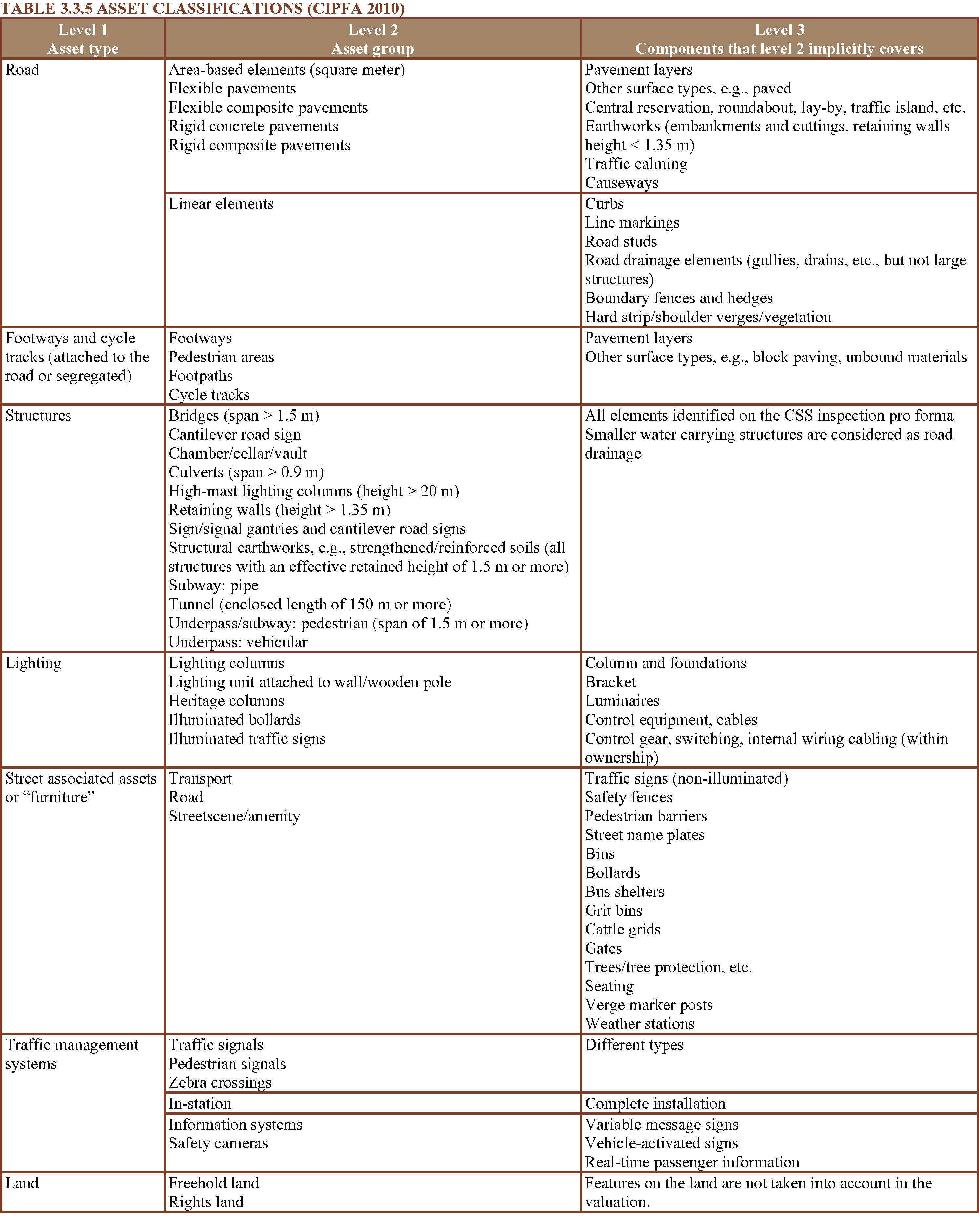
Asset Management Manual
A guide for practitioners!

Asset Management Manual
A guide for practitioners!
Assets need to be grouped in a consistent manner so that data can be aggregated for regional or national purposes, for example to determine actual expenditure or estimated spending need for a particular asset class, to allow organizations to benchmark performance against other organizations, and to allow individual organizations to track performance over time.
Classifications that may be used are shown in Table 3.3.5. The list is not exhaustive.

The levels in the table are defined as follows:
Level 1: Asset types include broad categories based on the general function of the assets. They divide the asset base into categories that may be suitable for reporting in the financial statement and that provide an appropriate a basis for high-level management information;
Level 2: Asset groups are used to distinguish between assets that have a similar function and form; and
Level 3: Components distinguish between asset components that may require individual depreciation models, e.g., to calculate different service lives and/or rates of deterioration.